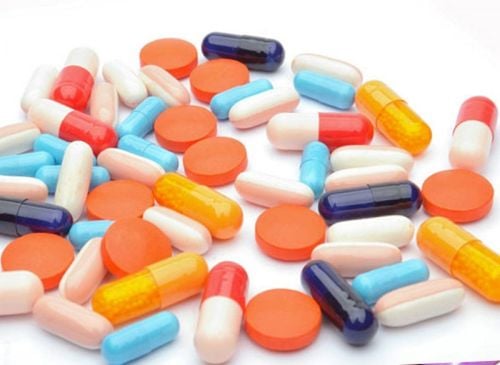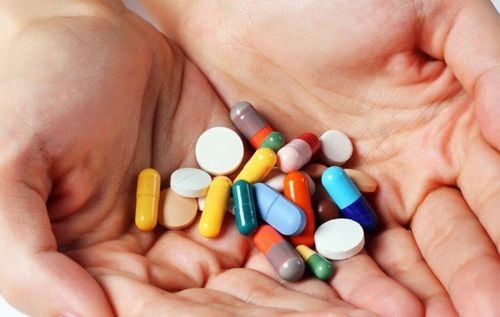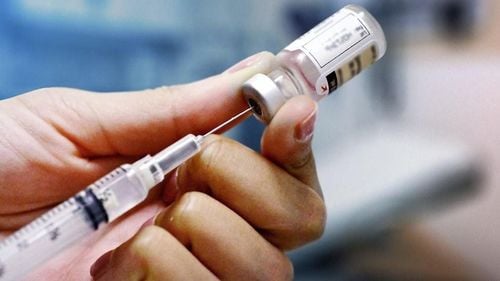This is an automatically translated article.
The emergence of multidrug resistance is a major threat to TB care and control globally. The World Health Organization (WHO) estimates that up to half a million new cases of MDR-TB occur each year worldwide. Currently, the drug Bedaquiline is approved for use as part of a combination drug therapy for the treatment of multidrug-resistant pulmonary tuberculosis when there is no effective treatment regimen.
1. Uses of the drug Bedaquiline
The drug is used in combination with other drugs to treat multidrug-resistant pulmonary tuberculosis (TB) in people with limited treatment options. Bedaquiline belongs to a group of drugs known as antibiotics. It works by stopping the growth of the bacteria that cause tuberculosis.
2. How to use Bedaquiline
Take this medication with food for maximum absorption, usually once daily for the first 2 weeks, followed by 3 times a week for 22 weeks. According to the manufacturer's instructions, the patient should swallow this medication whole. However, many of the same drugs (immediate-release tablets) can be broken up or crushed.
For best effect, take this antibiotic at evenly spaced times. If you are taking this medication daily, take it at the same time each day. If you are taking this medication on a weekly schedule, take it on the same day of the week and at the same time of day. Mark the days on the calendar when you need to take your medicine.

Nên sử dụng thuốc đều đặn và vào cùng một thời điểm mỗi ngày
Keep taking this medicine (and other TB medicines) until the prescribed dose is gone, even if symptoms disappear after a few days. Stopping the medication too soon or skipping doses can allow bacteria to continue to grow, which can lead to a return of the infection.
3. Undesirable effects of the drug Bedaquiline
Tell your doctor right away if you have any serious side effects, including: symptoms of liver damage (such as dark urine, persistent nausea, vomiting, loss of appetite, stomach upset). thickening, abdominal pain, yellow eyes, skin). Get medical help right away if you have any serious side effects, including: coughing up blood, chest pain, fast, irregular heartbeat, severe dizziness, fainting.
Bedaquiline can often cause a rash but is usually not serious. However, you may not be able to tell if it's a drug rash or a sign of a serious allergic reaction.
4. Bedaquiline should be used with caution
Bedaquiline can affect the electrical activity of the heart, which can lead to abnormal and potentially fatal heart rhythms. Low levels of potassium or magnesium in the blood can also increase the risk of QT prolongation. This risk may be increased if you take certain medicines (diuretics) or if you have conditions such as excessive sweating, diarrhea, or vomiting. Patients should be monitored for symptoms of cardiotoxicity and with an electrocardiogram (ECG). Serum potassium, calcium, and magnesium should be tested initially and whenever clinically indicated, particularly if QT prolongation is detected.

Sử dụng Bedaquiline kéo dài có thể gây ra rối loạn nhịp tim và dẫn tới tử vong
Electrocardiogram should be measured initially and repeated at least 2, 12 and 24 weeks after initiation of treatment. Weekly electrocardiograms are recommended for people prescribed bedaquiline and other QT-prolonging drugs including fluorquinolones, macrolide antibacterials, and clofazimine; a history of Torsade de Pointes, congenital long QT syndrome, hypothyroidism and arrhythmia, or uncompensated heart failure; or have lower than normal serum calcium, magnesium or potassium levels.
Alcohol can increase the risk of liver disease. Avoid alcoholic beverages while using this medicine.
Bedaquiline may also cause live bacterial vaccines (such as typhoid vaccine) to not work. Do not have any vaccinations or immunizations while using this medicine unless your doctor tells you to.
The elderly may be more sensitive to the side effects of this drug, especially QT prolongation.
Bedaquiline may be considered for children, people living with HIV, pregnant women, people with extrapulmonary TB, and people with multiple comorbidities who are on concomitant medication when an effective treatment regimen cannot be met. . However, careful consideration should be given to recommending the use of bedaquiline to these people.
5. Bedaquiline drug interactions
Bedaquiline is metabolised via the cytochrome P450 (CYP) system. Concomitant administration of rifamycins (eg, rifampin, rifapentine and rifabutin) or other strong inducers of CYP3A4 should be avoided. Certain other medicines can affect how bedaquiline is eliminated from your body, which may affect how bedaquiline works. Examples include efavirenz, rifamycins (such as rifampin, rifapentine).

Tránh sử dụng đồng thời Bedaquiline và rifamycins hoặc các chất cảm ứng mạnh khác
6. Note when using Bedaquiline medicine
When taking the drug, the patient should note:
Do not eat before taking the drug Abstain from alcohol and other drugs that are toxic to the liver Report any signs and symptoms of an adverse drug reaction to the doctor. Potential benefits and harms of bedaquiline Failure to adhere to treatment can lead to treatment failure, relapse, or drug resistance. Liver function monitoring: Liver-related adverse events have been reported with the use of bedaquiline. Patients should have liver enzymes aspartate aminotransferase (AST), alanine aminotransferase (ALT), bilirubin and alkaline phosphatase levels monthly and if symptomatic. Monitor for Nephrotoxicity: Bedaquiline does not require dose adjustment in patients with mild to moderate renal impairment. Bedaquiline should be used with caution in patients with severe renal impairment requiring dialysis. Serum concentrations in patients with renal impairment should be considered. If bedaquiline is administered with rifamycins or any other drug that induces or inhibits CYP3A4, serum drug levels should be monitored to ensure adequate treatment and minimize the risk of acquired resistance. Microbiological monitoring: Treatment should be accompanied by microbiological monitoring of sputum samples for culture on a monthly basis throughout and at the end of treatment, even after cultures turn negative. Monitor for Additional Side Effects: Patients should also be evaluated weekly for nausea, headache, hemoptysis, chest pain, joint pain, and rash. Monitoring for additional adverse events must be tailored to other drugs used to treat the patient's MDR-TB. This medicine is prescribed only for your current condition. Do not use it later for another infection unless your doctor tells you to. If a dose is missed during the first 2 weeks of treatment, the patient should not take the missed dose but should continue with the usual dosing schedule. From week 3 onwards, if a 200mg dose is missed, the patient should be given the missed dose as soon as possible, and then resume the 3 times weekly regimen. Do not exceed 600 mg in a 7-day period. This drug has a half-life of 4-5 months. Consider discontinuing bedaquiline 4–5 months before discontinuing other drugs in the regimen to reduce or avoid prolonged exposure to low concentrations of bedaquiline as a single agent and acquired resistance. afterward.
Please dial HOTLINE for more information or register for an appointment HERE. Download MyVinmec app to make appointments faster and to manage your bookings easily.
References: webmd.com, cdc.gov













